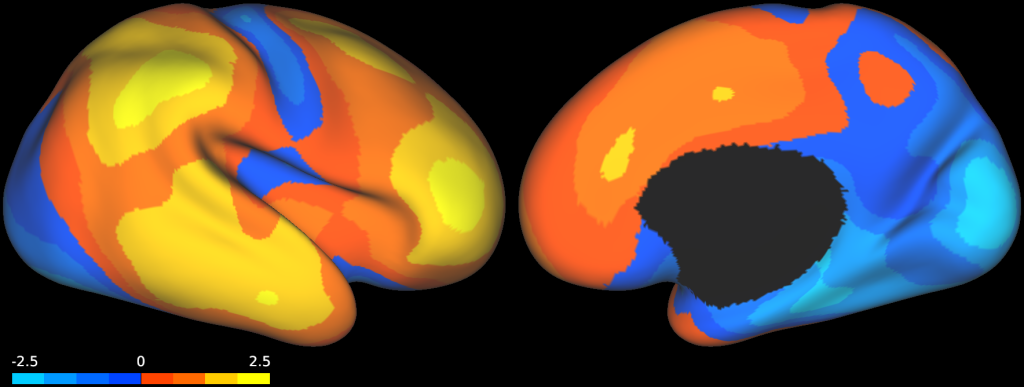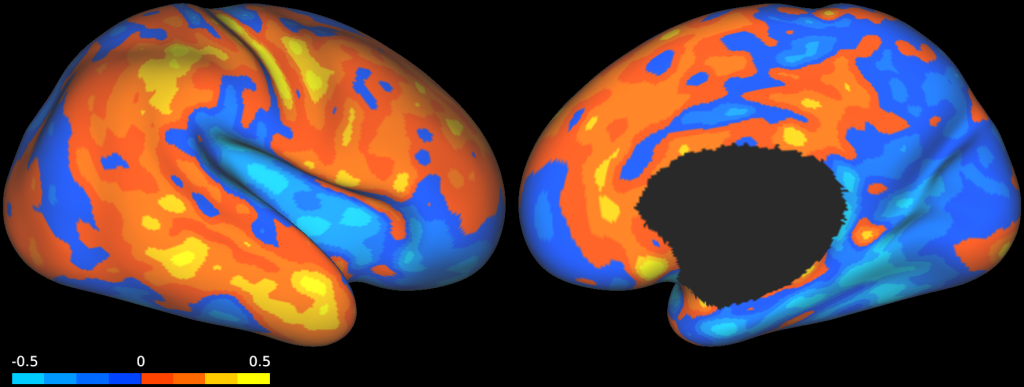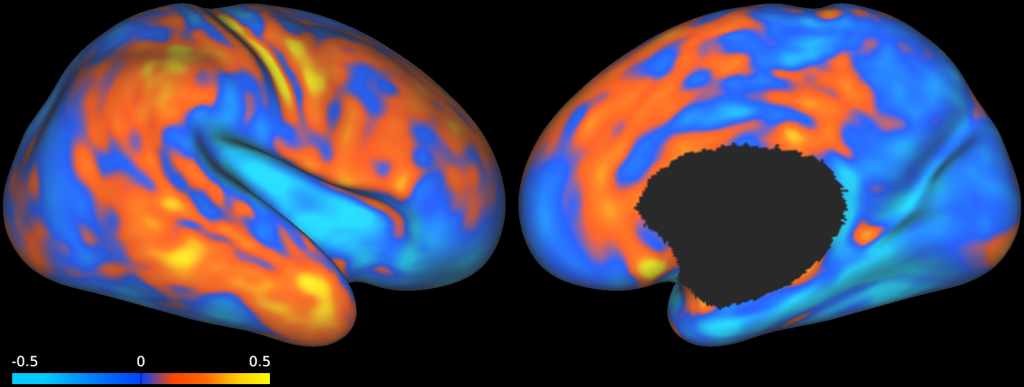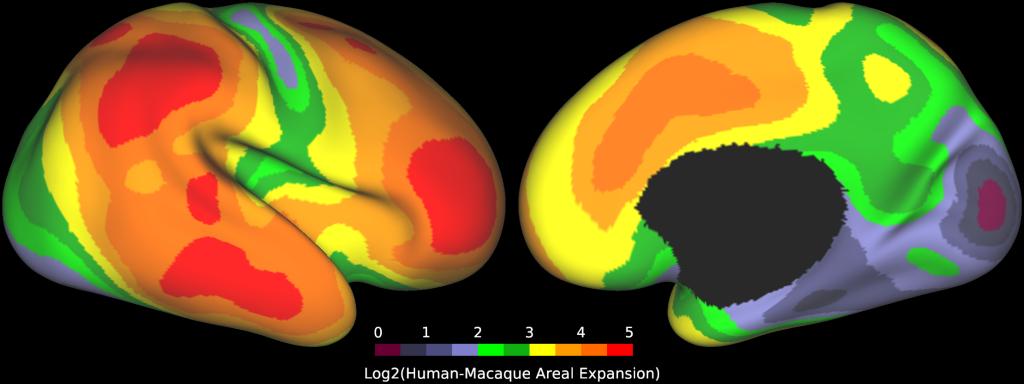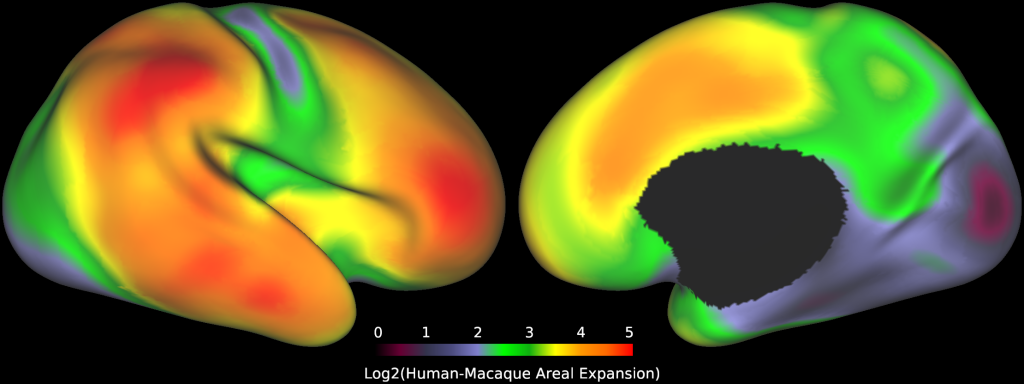FULL TITLE:
Similar patterns of cortical expansion during human development and evolution
SPECIES:
Human, Macaque
ABSTRACT:
The cerebral cortex of the human infant at term is complexly folded in a similar fashion to adult cortex but has only one third the total surface area. By comparing 12 healthy infants born at term with 12 healthy young adults, we demonstrate that postnatal cortical expansion is strikingly nonuniform: regions of lateral temporal, parietal, and frontal cortex expand nearly twice as much as other regions in the insular and medial occipital cortex. This differential postnatal expansion may reflect regional differences in the maturity of dendritic and synaptic architecture at birth and/or in the complexity of dendritic and synaptic architecture in adults. This expression may also be associated with differential sensitivity of cortical circuits to childhood experience and insults. By comparing human and macaque monkey cerebral cortex, we infer that the pattern of human evolutionary expansion is remarkably similar to the pattern of human postnatal expansion. To account for this correspondence, we hypothesize that it is beneficial for regions of recent evolutionary expansion to remain less mature at birth, perhaps to increase the influence of postnatal experience on the development of these regions or to focus prenatal resources on regions most important for early survival.
PUBLICATION:
Proceedings of the National Academy of Sciences of the United States of America
- DOI:
10.1073/pnas.1001229107
- PMID:
20624964
- Jason Hill
- Terrie Inder
- Jeffrey Neil
- Donna Dierker
- John Harwell
- David Van Essen
-
Hill_PNAS_2010_Devel_EvolutionaryExpansion_Figure_4.wb_scene
SCENES:- Figure_4A_Evolutionary_Expansion_Map (Relative Expansion)
- Figure_4A_Evolutionary_Expansion_Map - Interpolated
- Figure_4B_Postnatal_Expansion_Map (Relative Expansion)
- Figure_4B_Postnatal_Expansion_Map - Interpolated
- Figure_4C_Correlation_Map
- Evolutionary_Expansion_Map (Absolute Expansion)
- Evolutionary_Expansion_Map (Absolute Expansion) Interpolated

